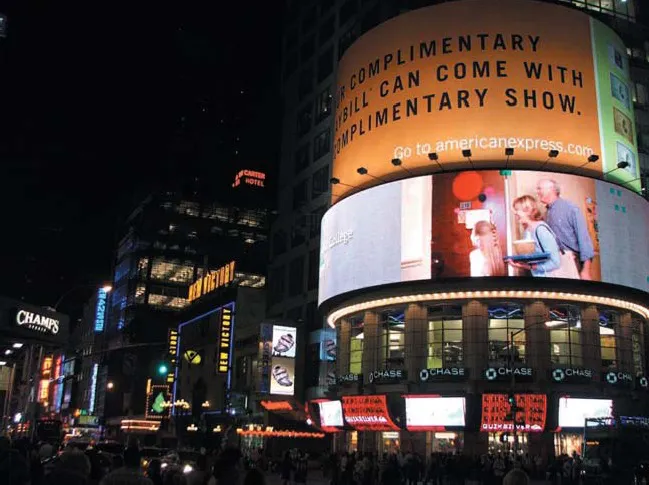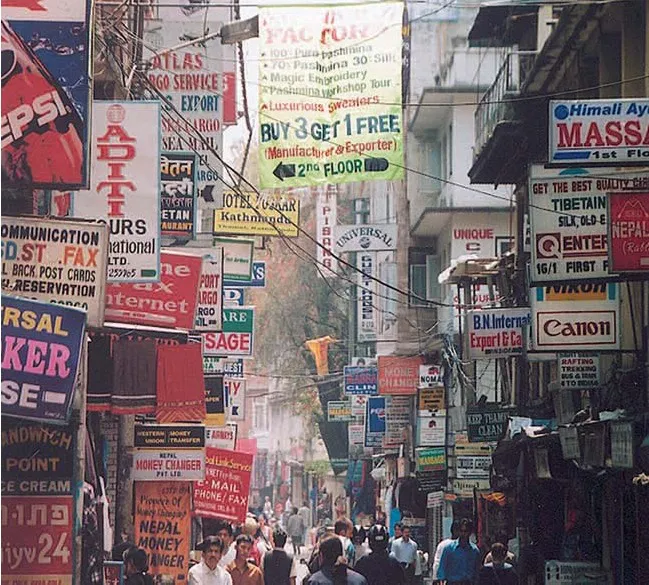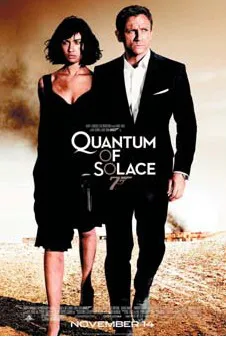1 Does advertising need another graduate?
Now that is an unnerving statement to start a book for young people embarking on a career in advertising with, so I had better explain what I mean. You will already have made a decision in your own mind to follow a course of study in Advertising and Media communications in one of its many forms. Some of you may have explored the possibilities of advertising as part of your Media or Graphic Design A-Level; others may have chosen a BTEC course in Graphic Design, Media or Business and Marketing. Many of you will be at university on one of a multitude of courses that include advertising in some form. Advertising Photography; Business, Marketing and Communications courses; Public Relations; Graphic Design; Media Communications; Creative Advertising or Advertising Design – to name some of the most popular. Whatever you are currently studying, you will be excited by a career in advertising and at the same time daunted by the prospect too.
I would be lying if I said that the course you are on and the qualifications you receive will be enough on their own to get you that first break in advertising. They won't. So what will? Essentially, you. Your personality, enthusiasm, ideas and understanding of the expectations of the advertising and media industry are your greatest assets. I can say absolutely honestly that a career in advertising is exciting, diverse, fulfilling and ultimately well rewarded. After well over 20 years as an art director, and for the last ten or so a lecturer in Advertising too, the whole business and process of advertising still excites me and it always will.
Of course in picking up this book for the first time you will want to know exactly what it takes to kick-start your career in advertising and media communications – that is not an easy task. Ask 100 people in advertising to give you their interpretation of what it takes and chances are you will probably get 100 different answers. Many of you may find you are confused enough already and need some more practical guidance in defining your career aims and then setting about achieving them. That is exactly what this book is intended to help you with: I want to try and offer you some insights into how advertising works as an industry and guide you past some of the half-truths and mystique that seem to surround it. You may then be able to see more clearly how your talent and enthusiasm can fit into the plethora of jobs advertising and communications can offer bright, motivated, creative and inspired young people like you.
Your tutors and lecturers will play a massive part in shaping your thinking whilst you are studying and may also have an impact on your future career decisions. As an advertising tutor I know very well that I cannot hope to give my students a definitive education that delivers everything they need to know; neither can your tutors. The process of developing your skills and knowledge to prepare you to work in advertising and media communications is based around the acquisition of experiences, in my opinion. Soak up, reflect on and act on everything you learn on your current course and milk your tutors and lecturers dry. Make sure you have asked all the questions you can and trained your mind to think critically based on the vast range of techniques and experiences that they can possibly impart. When you have done that, search for even more experiences. Compare, contrast and learn from what I have to say. Absorb every last drop of advice and insight you can from the industry practitioners you come in to contact with as part of the course. Never accept that you now know all you need to begin your career. The learning process at college or university is just the beginning of the journey. You will need to start learning all over again when you secure your first work-experience, placement and, hopefully, permanent job. Students who adopt an open-minded philosophy and a determination to spend the rest of their lives exploring and learning from new experiences will be successful in advertising and media communications.
Oh, and yes, advertising very definitely does need another graduate. All advertising agencies, design studios, publicity firms and marketing strategists constantly need to reinvent themselves with frequent injections of fresh ideas to present their clients with challenging, creative thinking that moves their brands and businesses forward. After all, that is how they earn their fees and maintain their reputations – you are a vital part of that process.
A piece of advice before I go any further, though. Unless a career in advertising and communication means more to you than anything else in the world, rethink your future. To be successful and well rewarded in the industry requires passion, dedication and ambition – a skin as thick as a rhinoceros might be useful too. Now put this book down for a moment and take a hard look at yourself: you know advertising and communication is absolutely where you want to spend your working life but which kind of job are you best suited for? Later chapters will define in more detail the role of the creative team – art director and copywriter – the backbone of advertising. Perhaps your marketing, communication and presentation skills lend themselves to your becoming an account executive at an advertising agency or a brand manager working for clients? Do you have the kind of analytical mind which account planners need to understand the profiles of consumers, customers and brands? As a talented designer you could be just what studio and production teams need, or will your efficiency and organizational talents be perfect for media planning and buying? It could be even that your engaging and persuasive writing and verbal skills draw you towards Public Relations where you can support advertising agencies as part of clients’ marketing strategies.
By reading through this book and being inspired by its images and learning from the contributions of advertising and communications practitioners, I hope you will find that your career dreams look more achievable. With energy, desire and a talent for ideas you can get there. Good luck, the world is yours for the taking if you want it badly enough.
But enough about what is in my book – why should you read it? In my opinion the single most important piece of advice I can give any student of advertising and communication is to spend every waking moment with all your senses open and in receive mode. The critical role of any piece of advertising or media communication is to deliver its message in precisely the way its target audience are most likely to be receptive to it. For you to play a part in achieving that successfully, it is vital to be both creatively stimulated and to understand the way in which potential consumers think, speak and behave. Throughout this book I will demonstrate ways in which your minds can become an Aladdin's Cave of ideas, inspiration and knowledge. Equally, I believe it is important to understand as fully as possible the ways in which others have gained their first career break or what different types of employers look for when recruiting graduates. By speaking with professionals across the industry, I can give you the chance to share some of their secrets and to prepare yourself better with their advice and observations.
Don't be fooled, no book can be definitive and I don't own a magic wand. What I would like you to believe is that you can never know too much. Your teachers, tutors and lecturers will all have their knowledge to impart; my book will supplement that and offer you some more directions and inspirations.
2 Resisting the usual
Resist the usual. The inspirational mantra of Raymond Rubicam, one of the twentieth century's most innovative and pioneering ad-men. All of you who aspire to a career in advertising and communication would be well advised to tattoo those words on the back of your hand. Advertising thrives on a need to think independently and differently with a desire to explore new ways of delivering messages – so should you. Picture the scene, you are in an interview room with at least ten other interviewees, all of whom have the same qualifications and similar education. What is there to separate you? Who will get the job? In my experience, when all ten have gone and there are tough decisions to make, the person who had the most inventive ideas, an engaging and enthusiastic personality, and above all stood out as being a thinker who is just a little different to the rest wins every time.
Throughout your studies and your future careers the continual absorption of new creative stimuli and inspirational points of reference will be a vital part of who you are and help make you special in the eyes of potential employers. To help you along with that lifelong learning process, I’ve identified some of advertising's groundbreaking and thought-provoking idea inventors. Whilst these are people who have inspired me in my career, I accept that some of their work and thoughts may seem a little dated and out of step with advertising in the twenty-first century. Don't be so blinkered as to feel they are irrelevant to the way you are taught to think and act on your courses, though; much of what these great people have achieved still shapes the way advertising is created. Also, don't stop where I stop either: looking at influential advertising from around the world, exploring the thinking behind it and being inspired by the people who created it is an integral part of making you stronger. I firmly believe that the best advertising people are the best informed – I’m not telling you what to think, just simply telling you to think.
The origins of the advertising species
To make sense of the kinds of sophisticated, targeted advertising messages we are all surrounded by and bombarded by every day of our lives, I think it is useful at this point to take stock of how advertising became such an incisive, persuasive marketing tool. Whether we like it or not, advertising is inextricably linked to the way we live in the twenty-first century. Our towns and cities are ring-fenced with powerful billboards, and their walls and shop fronts decorated with seductive, enticing brand messages – they fill our ears, impair our vision and even appear under our feet. When I meet new students during their induction week I set them a challenge. Along a prearranged route between the advertising studio we first meet in and a city centre rendezvous, I invite them to participate in the Great Ad Race –armed with a sheet of paper their mission is to list all the different types of advertising they encounter along the route. The current record is over 100 in an hour!
That little bonding exercise doesn't even begin to include the direct mail you receive in your daily post, the advertising you see in newspapers and magazines or the messages you hear on your radios. Socially, your television is peppered with commercials and sponsored stings across the multitude of channels you can now receive. Your evening at the cinema is spent being entertained by yet more commercials and trailers, and when the main film starts it frequently assaults the senses with product placements – if it's good enough for James Bond in his Tom Ford suits and Omega watches then it's good enough for you. Did you spot the Nike-clad Wildcats in High School Musical 3: Senior Year as they rehydrated themselves with Dasani? And Sex and the City, the movie and the American TV show, had almost as many featured brands as it had dialogue. Many brands are viewing placement as being increasingly important to their advertising strategies, and continuing relaxation of the UK regulation of such placement will see this increase to levels that have been commonplace for some years in the USA. Also, no doubt many of your evenings out are organized via email, social networking sites or texting – try counting the ads next time you are arranging to meet at 8.00pm!
The chaotic clutter of contemporary advertising messages in a Hong Kong street.
Little did the Ancient Egyptians and Greeks who made posters and sales messages from papyrus know what a monster they were creating. Evidence of advertising communications has been found among almost all the ancient civilizations. The ruins of Pompeii and ancient Arabia have concealed trade and political messages, whilst painted advertisements on walls and rocks in Asia, Africa and South America can, in some parts of India, be traced back to 4000 BC. When towns and cities became more densely populated in the Middle Ages, advertising communications were largely visual symbols (because most people were unable to read) – footwear for a cobbler, sacks of flour for a miller or horseshoes for a blacksmith. Tradesmen also used street callers or town criers to attract customers, an unrefined form of cold calling perhaps?
It is surprising there is any room left for a story line with the sheer volume of products strategically placed for advertising purposes in recent James Bond movies.
Image courtesy of Danjag, LLC, United Artists Corporation, Columbia Pictures Industries Inc.
By the seventeenth century literacy had improved, as had the ability to print multiple copies of sheets of paper. As a result, advertising became more sophisticated, handbills with words were commonplace and weekly newspapers began to feature advertising, often for books or medicines. The growth of businesses, advancements in industrial mechanization and a need for businesses to shout louder than an increasingly growing range of competitors led to a greater demand to advertise and promote mass-produced products. In 1836 the French newspaper La Presse became the first publication to include paid-for advertising – this meant it could lower its cover price and sell more copies – and it wasn't long before all newspapers had followed suit. The next logical step was for advertising to become a more organized industry, and the first moves were made towards forming advertising agencies. At first their businesses centred on the brokering of advertising space for newspapers, then in 1869 a Philadelphia company became the first to offer its customers a creative service. NW Ayer & Son effectively became the first full-service agency by writing and producing advertisements, then booking space for them in appropriate newspapers and charging a commission – remarkably this practice still exists today when buying media space. The principle is that the publication quotes its rates for varying sizes of space, the advertising agency passes this cost on to its clients and the publication then offers the agency a percentage commission for booking space with them.
Forward-thinking clients took advantage of developments in printing techniques that allowed the inclusion and mass reproduction of illustrations, and the use of colour became feasible too. The relationship between a brand, its values and the advertising messages it communicated to consumers and customers began to grow.
A Victorian-era example of full-colour press advertising for Pears soap.
Pears soap recognized that they needed to be far more proactive and even aggressive in pushing their products under consumers’ noses. After marrying into the soap-making family, Thomas J. Barratt developed techniques that will be familiar to twenty-first-century advertising strategists by launching a series of advertisements based around artistic images of cherubic children. He used these charming and visually engaging visuals to reflect and reinforce the brand's core values of quality, purity and simplicity. In a precursor to modern-day advertising and its use of slogans and catch-phrases, Victorians adopted the phrase ‘Have you used your Pears soap today?’ often in response to a verbal greeting such as ‘good morning’. Meanwhile, the pottery manufacturer Josiah Wedgwood foresaw the challenges facing the manufacturing industry in post-Industrial Revolution England. The ability to mass-produce his firm's products in factories meant he had more pottery stockpiled than he had customers for it. It was evident that he needed to increase demand for his products. Using a variety of inventive marketing techniques he presented his well-defined product range in a number of segmented ways – for example, kitchenware, bathroom, decorative and personal products were brought to their respective marketplaces independently rather than under the unwieldy, all-encompassing umbrella of chinaware. He also targeted his potential consumers in smaller social groups according to class, age, gender and profession. Once Wedgwood had th...






